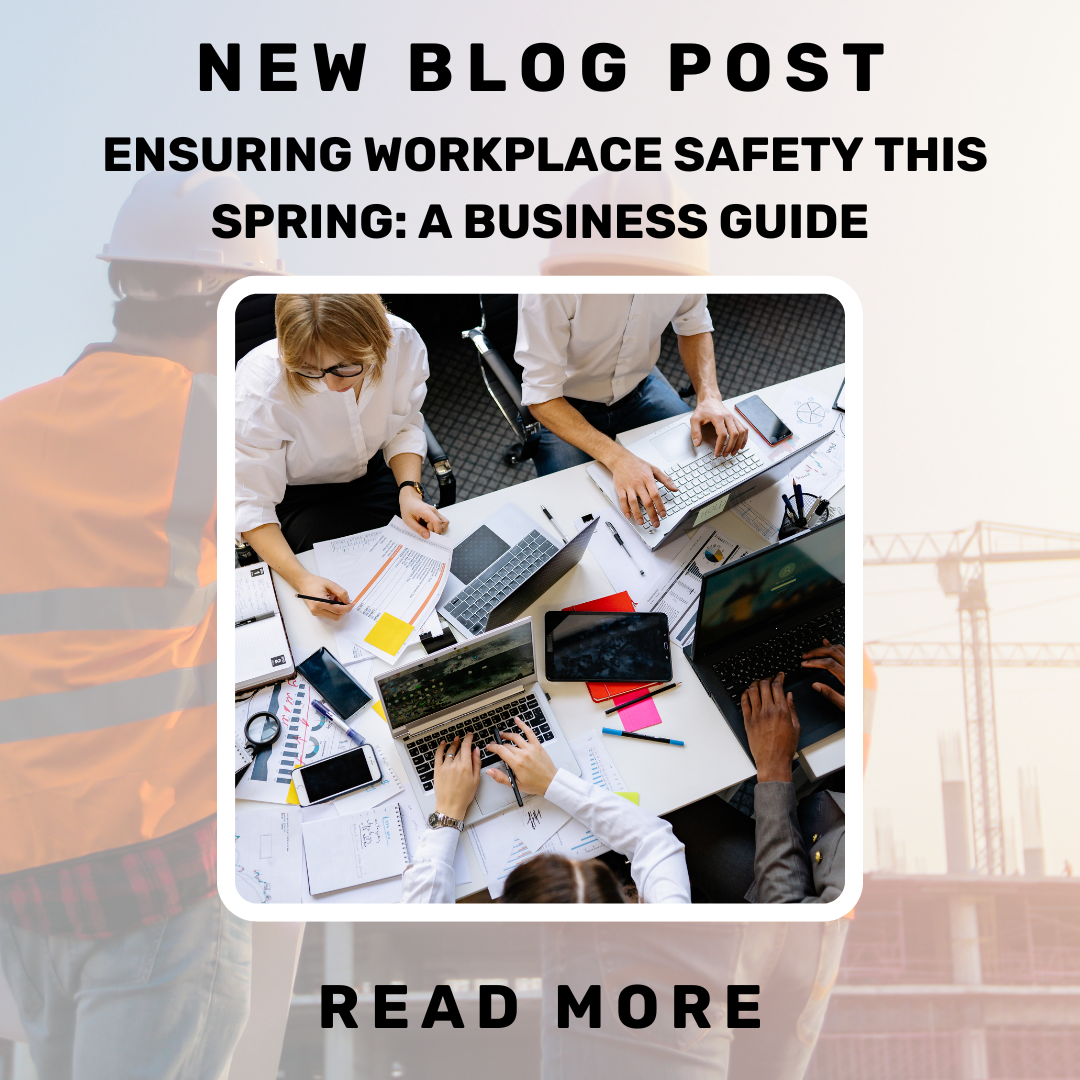With the arrival of spring comes a much-needed respite from the chilly winds of winter, bringing with it blooming flowers, chirping birds, and warmer weather. However, this beautiful transition also introduces unique challenges and potential risks in the workplace, especially for those working outdoors. As business leaders, fostering a safe working environment is paramount, and spring offers the opportunity to review and reinforce safety measures.

Recognising Spring Hazards
Sun Exposure: Outdoor workers are exposed to prolonged sun, making them susceptible to sunburns and heat-related illnesses. It is essential to educate them about the importance of wearing sunscreen, hats, and protective clothing to mitigate the risks associated with sun exposure.
Dehydration: With temperatures rising, the risk of dehydration becomes more pronounced. Encouraging regular water intake and providing easy access to water are crucial steps in preventing dehydration-related complications.
Spring-Cleaning Injuries: Spring cleaning is a common practice, but it comes with its set of hazards, including falls, cuts, and strains. Training on proper lifting techniques and the use of safety equipment can significantly reduce the risks associated with cleaning activities.
Proactive Safety Measures
Update First Aid Kits: Ensuring that all first aid kits are fully stocked and up to date is a pivotal step in workplace safety. Regular checks can help in identifying any missing or expired items, and replenishing them promptly can make a significant difference in emergency situations.
Prevention over Reaction: A proactive approach to safety is always more effective than a reactive one. Identifying and addressing potential hazards before they cause harm can save both time and resources, not to mention prevent pain and suffering.
Regular Training Sessions: Training sessions on workplace safety, proper hydration, and protection against sun exposure can enhance employees' awareness and help in building a culture of safety within the organisation.

Fostering a Safety Culture
Building a safety culture is not about restricting employees; it’s about creating an environment where everyone feels protected and valued. Regular safety drills, open communication channels for reporting hazards, and ongoing education can cultivate a sense of responsibility among employees, encouraging them to look out for one another.
Safety Equipment: Providing employees with the necessary safety equipment like gloves, safety goggles, and helmets, depending on their job role, is fundamental in preventing injuries. For outdoor workers, supplying sunscreen and hats can be equally important.
Encouraging Breaks: Allowing and encouraging regular breaks, especially for those working in the sun, can prevent overexertion and heat-related illnesses. Breaks are also essential for maintaining high levels of focus and reducing the risk of accidents.
Flexible Work Hours: If possible, allowing flexibility in work hours, especially for outdoor workers, can help in avoiding the peak sun intensity times, reducing the risk of heat-related illnesses.
Spring is a season of renewal and growth, but it also brings new challenges and hazards in the workplace. Recognising these potential risks and adopting a proactive approach to safety can make the workplace safer and more enjoyable for everyone. By emphasising prevention, maintaining updated first aid kits, and fostering a safety culture, businesses can ensure a harmonious and productive environment this spring and beyond. After all, a safe workplace is a happy and productive one!













